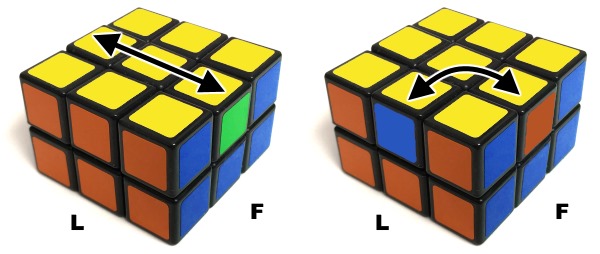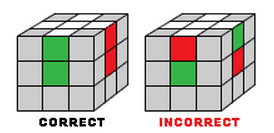


Usually I start with an orientation of 4 corners, then I orient 4 opposite corners, and then I permute all corners. That means I don't care what color (in this case corners) I start with. While solving, I am color-neutral, which I think is a quite considerable advantage. Thus it doesn't matter if the upper layer on a picture is rotated by a U move, U2 or U3 = U' move, or if corners are "solved" (as in case of a picture). But I don't care about their relative position at this moment. I only care whether the lower-layer corners, as well as the upper-layer corners, are correctly permuted and oriented. Personally, I don't insist on corners to be "solved" (as seen on a picture). solving of all edges except for those belonging to the M-ringĪfter completing first step, the puzzle might look like this:īut it doesn't have to.The method can be divided into three main steps: Speaking - a 2x2x2 cube was introduced on a market later than a 3x3x3 cube - the Ortega method has been used, at first, just for corners of a 3x3x3 Rubik's cube in the same manner as demonstrated below. the Ortega method is primarily used for a 2x2x2 cube, however, it can be used in some step of a 3x3x3 cube as well). The method is often referred to as Ortega ( Ortega for a 3x3x3 cube, more precisely), because its first step corresponds to a solving of a 2x2x2 Rubik's cube just by the Ortega method (i.e. Nowadays there are plenty of variants of CF method, but I know only one person from France who is speedcubing a 3x3x3 Rubik's cube more or less in the same order of steps as described below. If anyone cares, the 2x2x2 attempts were following:Ĭorners-first method experienced the biggest boom during the 80's (a winner of the first world championship used this method, among others). 2010 I reached an average time of 3.45 seconds for a 2x2x2 cube. 2010 I reached an average time of 18.94 seconds with them (and no others) and on 9. In fact, I say they could be better ones. There are precisely the algorithms I use. Therefore, I adapted it to a form that was understandable to me and which is described below. At least the algorithmic part for solving the edges. I spent some time studying it, but I didn't understand it. Since CFOP contained more algorithms, I picked the CF method. By the way, it's a pity that neither of Czech sites from which I gathered information in my cube-beginnings (speedcubing.wz.cz (CF) by Jan Balhar, or (CFOP) by Josef Jelínek), are existing to this day. At that time, only the corners-first and CFOP (corners-first is being abbreviated by the letters CF, which can be confused with CFOP, especially by beginners) were possible to be found online in Czech. Soon I found out there are faster methods that the one I have been using so far (the term "faster method" is nonsense - methods can not be "fast"). Since I am playful and competitive type, I was not only pulled in, but also forced to make faster execution each time. Even though I used instructions, a Rubik's cube solved for the first time made me feel an indescribable joy (almost as strong as a Rubik's cube solved while blindfolded did for the first time (beginner's method: layer by layer solution) and solved the puzzle accordingly. Today, I regret I didn't solve a cube intuitively back then. While trying to solve this problem, I, however, scrambled the cube and didn't come close to this state anymore.

I came (accidentally, needed to say) to the point in which only 2 edges were misoriented on a cube - see a notation for the Rubik's cube. In the summer of 2004, I started with a solving of the Rubik's cube.


 0 kommentar(er)
0 kommentar(er)
